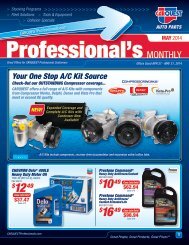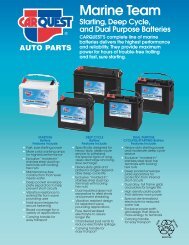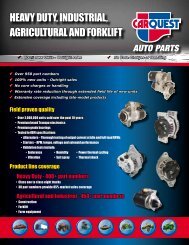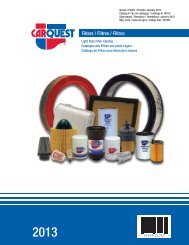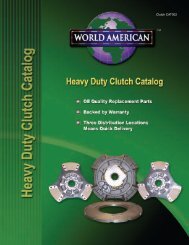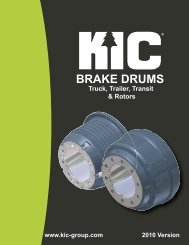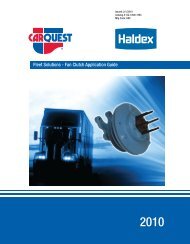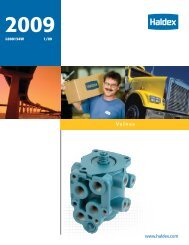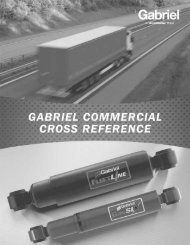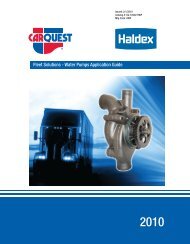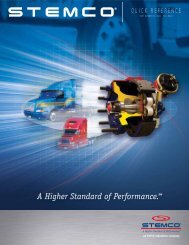Steering Gears Application Guide - CARQUEST Auto Parts
Steering Gears Application Guide - CARQUEST Auto Parts
Steering Gears Application Guide - CARQUEST Auto Parts
- No tags were found...
Create successful ePaper yourself
Turn your PDF publications into a flip-book with our unique Google optimized e-Paper software.
Common Complaints16−POWER STEERING GEARS5.Hard <strong>Steering</strong>. Hard steering is experienced when steering wheel effort exceeds 100 inch poundsmeasured at the steering wheel retaining nut. Hard steering will remain constant through the full turn. Donot confuse hard steering with binding.The driver may describe hard steering in the following ways:* No power assist* Steers like a manual gear* Won't turn all the way6.Hard steering can result from hydraulic and/or mechanical problems. A complete mechanical andhydraulic diagnosis is necessary to determine the cause.Excessive Free Play / Unresponsive Motion. Excessive free play is a condition where there is toomuch steering wheel movement before the steer tires move. A small amount of free play is considerednormal.The driver may describe free play in the following ways:* Too much slop in the wheel* Too much backlash* Slack in the wheelFree play is normally a function of looseness in the linkage.7. Shimmy Shimmy is a shake or vibration of the front tires that is transmitted through the steering wheel.The driver may describe shimmy in the following ways:* <strong>Steering</strong> wheel shake* Cab shakes* <strong>Steering</strong> wheel chatter8.Shimmy is a funchtion of looseness in the steering linkage, looseness in front end components orunbalanced tires. Shimmy can also be caused by air trapped in the system.Noise Noise in the steering system can come from any number of components. Harmonics or hydraulicnoise can be caused by fluid flow. Metallic or grinding noises come from component parts.The driver may describe noise in the following ways:* Growls* Swishes* Pops when steering* MoansWhen noise is present you must first determine if it is a mechanical or hydraulic noise. Most mechanicalnoises are a result of looseness or wear in components. Hydraulic noise will normally be associated withproblems in pump flow, such as cavitation or low fluid levels.16 − 43



